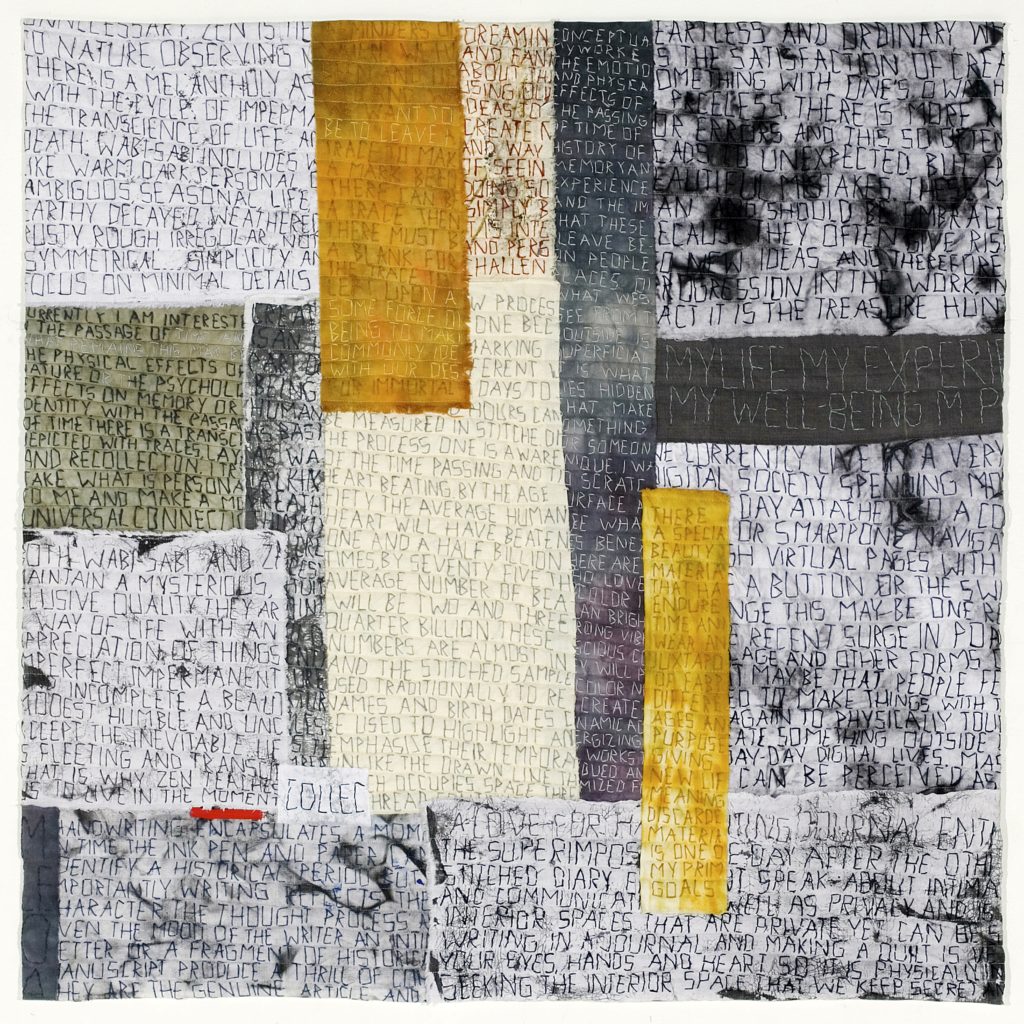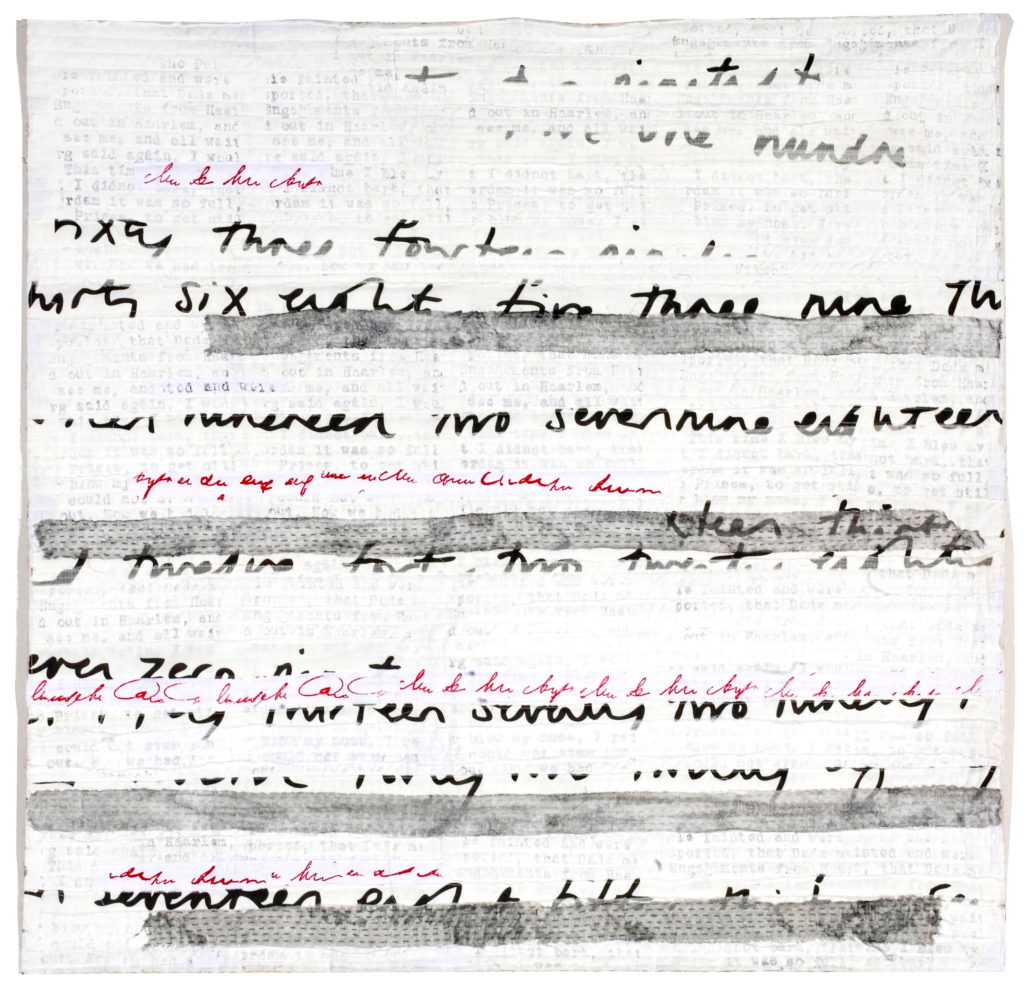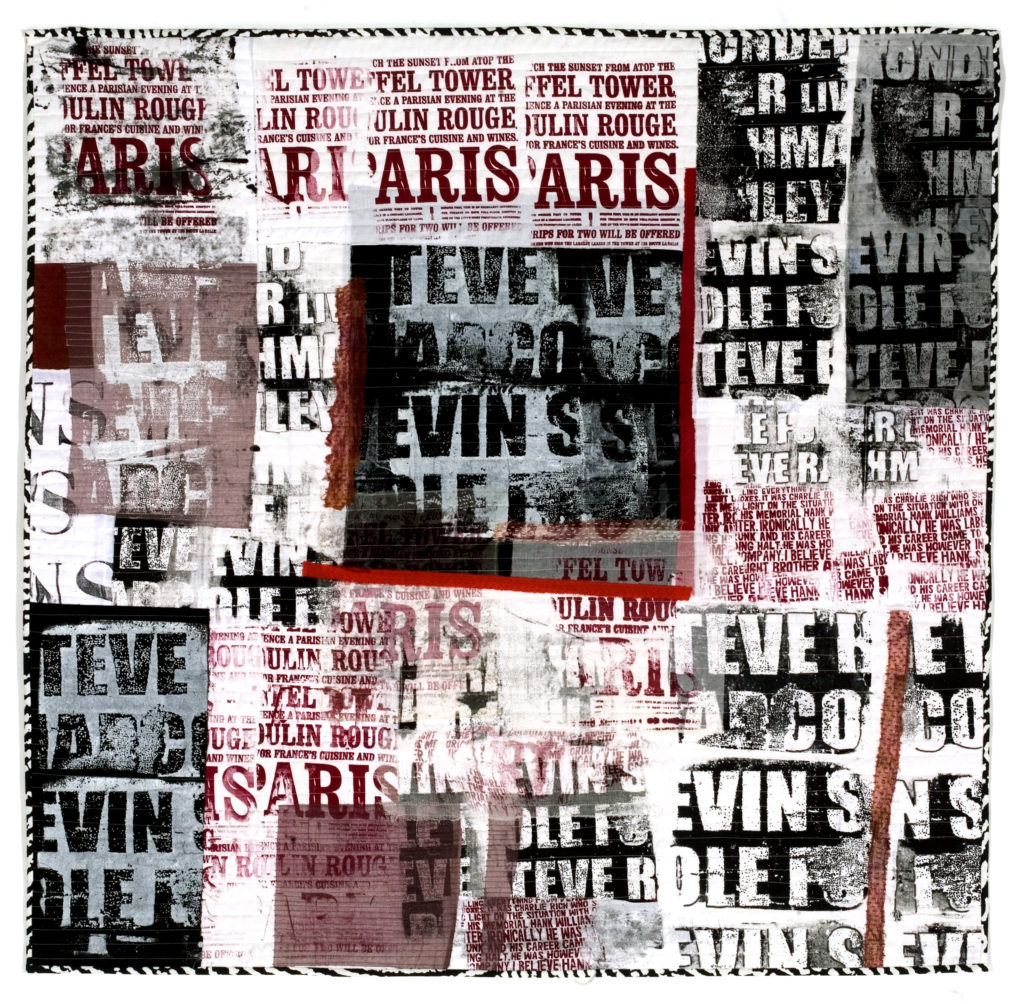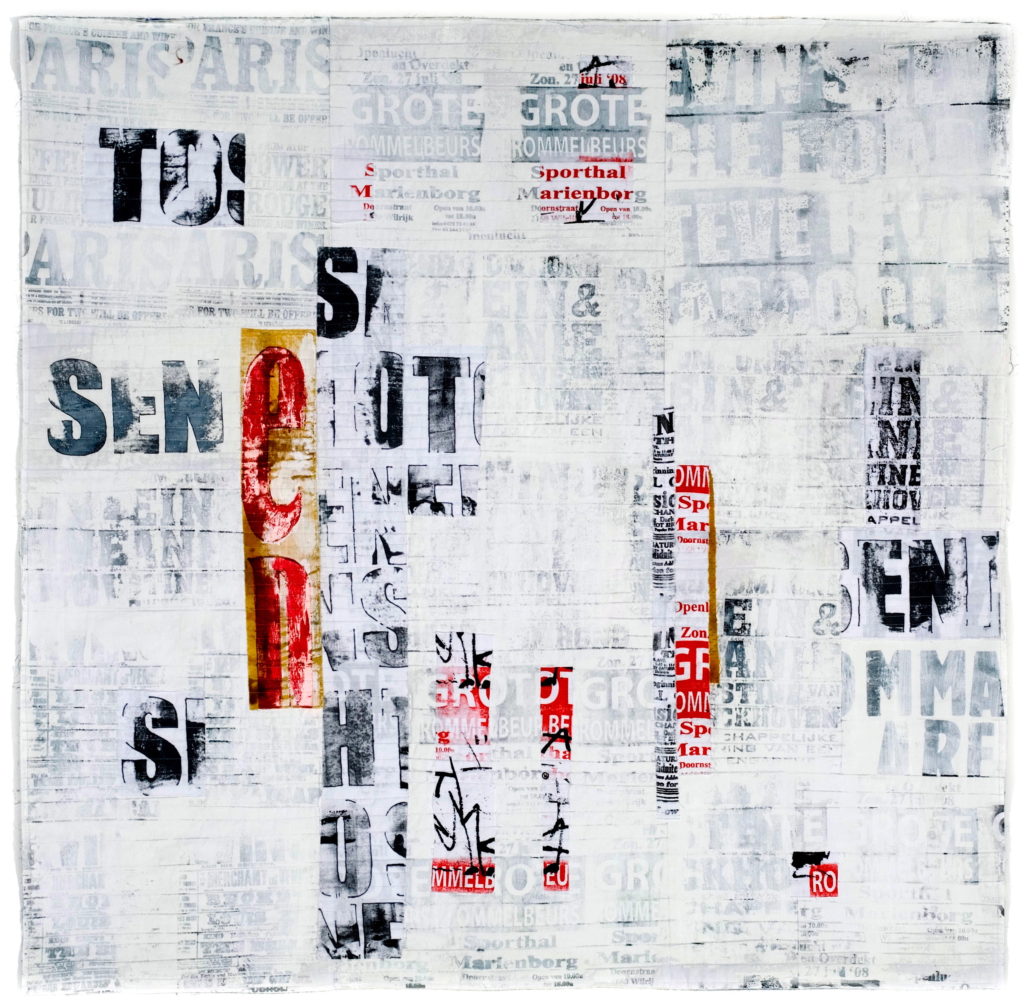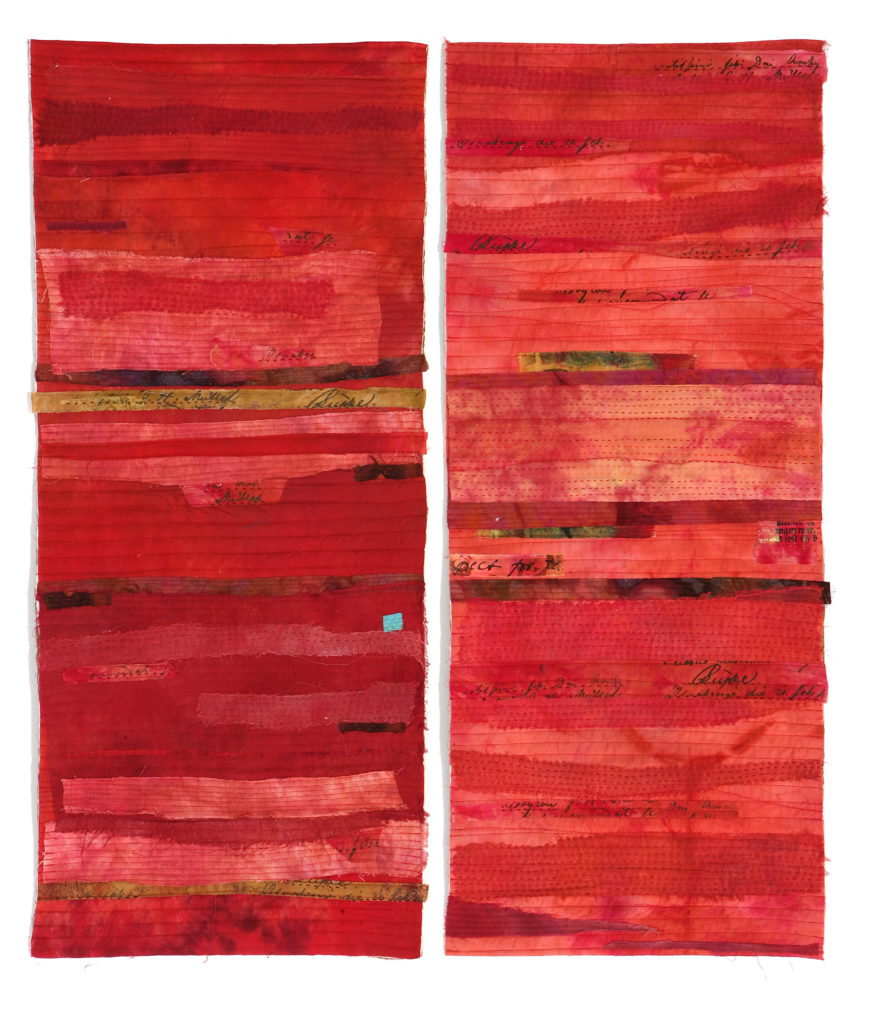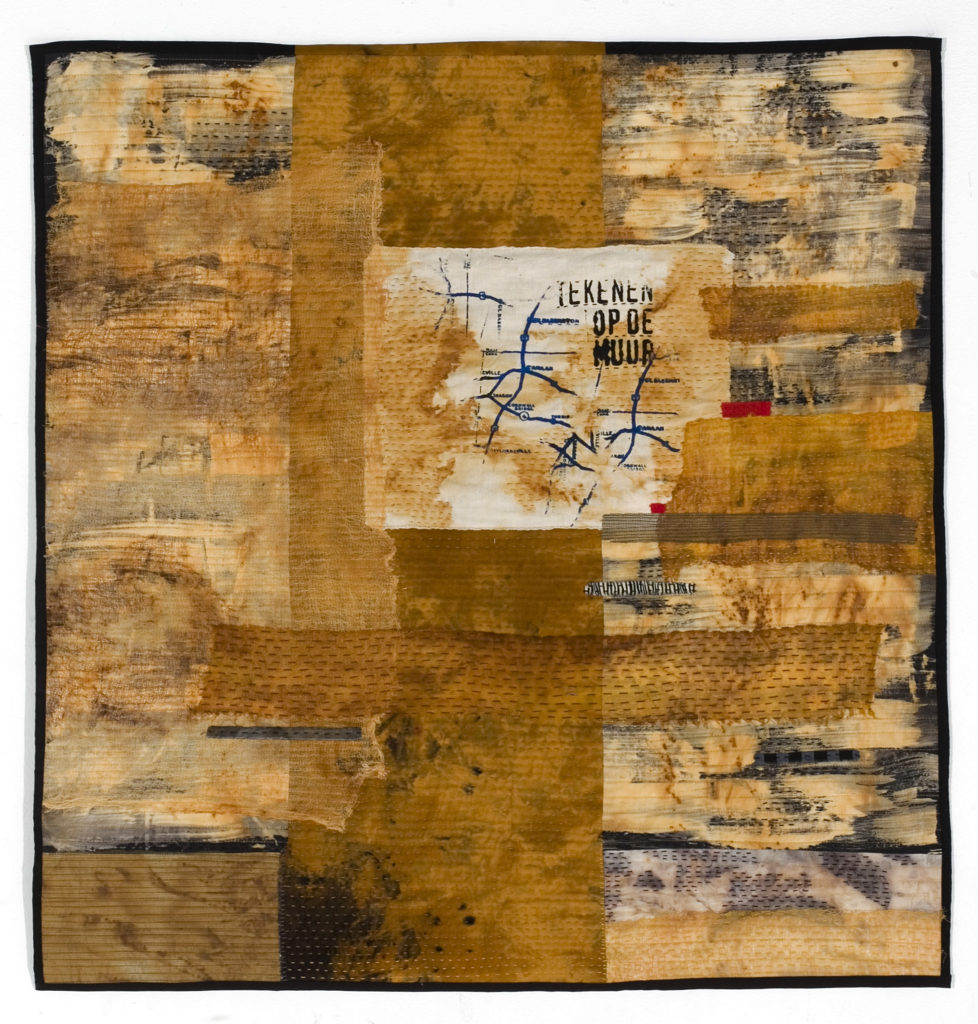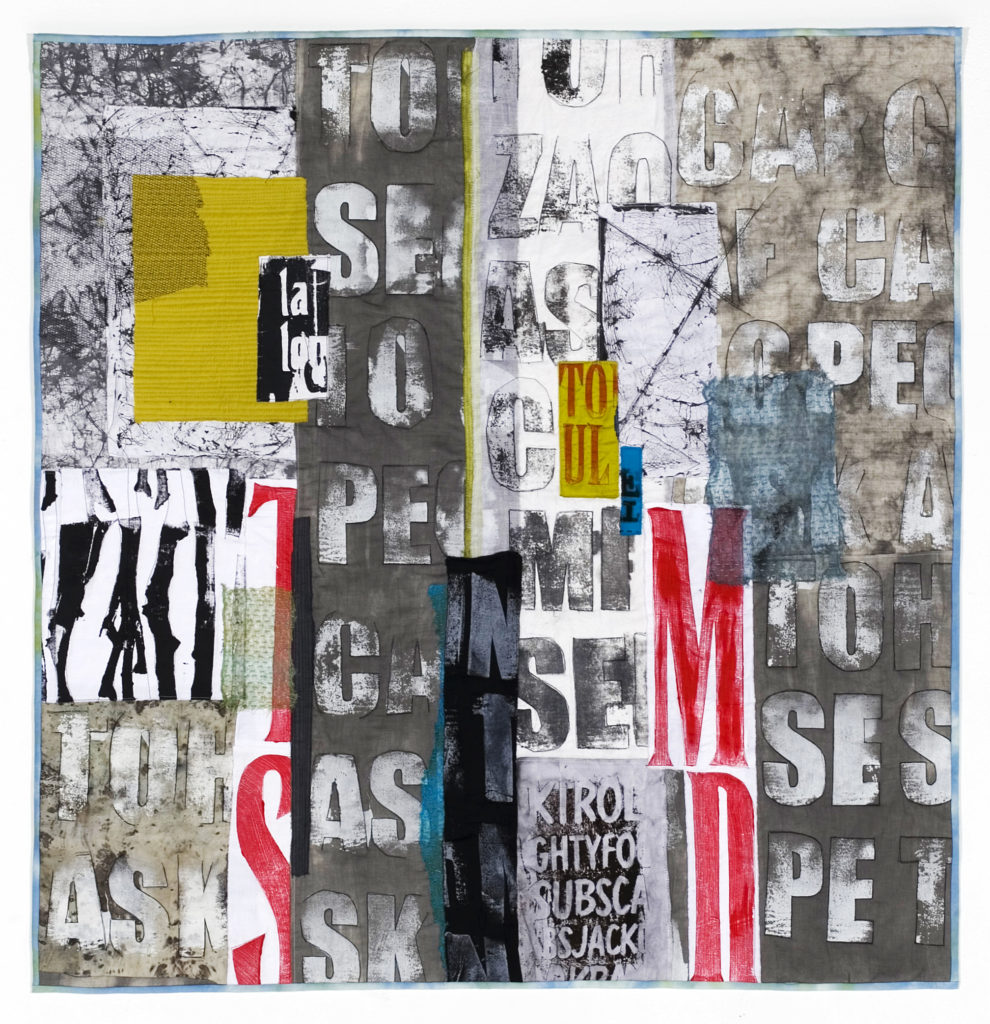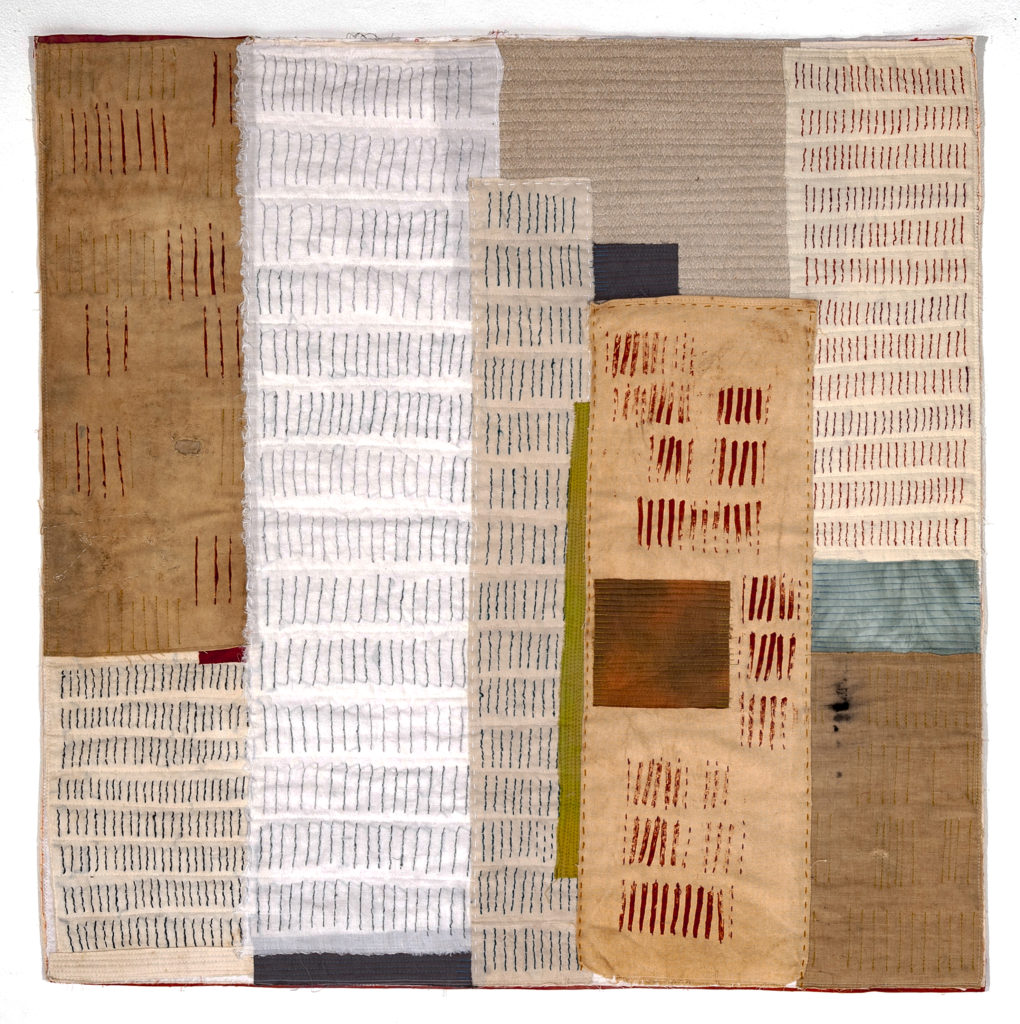Jette Clover
” My work is collage constructions, but it is rooted in the quilt tradition “
- Captions clockwise from top left:
- In Other Words, 2016, 94 x 94 cm. hand embroidered cotton and linen
- Words 6, 2011, 100 x 100 cm. Cotton, cheese cloth, acrylic paint
- Letter Landscape 8, 2008, 122 x 120 cm, screen printed cotton, organdie, cheese cloth
- White Wall 2, 2009, 122 x 122 cm, screen printed cotton, acrylic paint
- Significant Stitches, 2018, 100 x 100 cm, screen printed and hand embroidered cotton and hemp silk
- Metropolis 6, 2015, 105 x 102 cm, screen printed cotton, linen and cheese cloth
- Territory, 2015, 92 x 97cm, rusted and discharged cotton, cheese cloth
- Red Landscape, 2003, 102 x 86 cm, dyed and screen printed cotton and cheese cloth
Born in Denmark and now based in Belgium Jette Clover creates ‘collage constructions’ that are inspired by language.
What is your background in textiles?
Like most other fibre artists my first textile experience was as a child learning to knit and sew from my mother and grandmother and later sew my own clothes. I have always had a need to do something with my hands, something tactile. Living in California in the 1970s, a very craft oriented period, I was spinning, dyeing, weaving, batiking and stitching. I would have loved to study textile art, but at that time the university textile departments were all about science and techniques, not about art, so I went to the art history department and continued doing my textile activities on my own.
You have lived in lots of countries where were they and where are you based now?
I was born and raised in Copenhagen, Denmark. I studied journalism and worked at a daily newspaper for five years, and then moved to the Netherlands with the plan of studying art for a year and then go back to my job at the newspaper. But I met and married an American musician and moved to America, where I got a degree in art history and ran a textile gallery. After 15 years we moved to the Netherlands, where I worked at the Dutch Textile Museum, organizing exhibitions and educational programs. It was a great job, combining my love of textiles, of art and of writing. However, after ten years I missed making my own art work, so I left the museum in 1998 to become a full time studio artist – and that is what I have been doing ever since, first in the Netherlands, then back in America for five years and since 2005 in Antwerp, Belgium. We were lucky to find a big house, where the ground floor earlier had been a grocery store and now is my studio. At other times I have had studios away from home, but I prefer the combination home- studio, especially for working late at night.
How do you describe your work?
My work is collage constructions, but it is rooted in the quilt tradition, even though I was never a traditional quilter. I layer fabric and paper and I stitch, but I also do a variety of surface design techniques, so I think the best description would be to say mixed media. I am inspired by language, both in the form of published text, hand written letters and the urban display of posters, advertisements and graffiti. The step for me to use text and lettering in my art work was quite natural, because of my journalist background – and I still love to write – and from living in different countries and having to use different languages in order to communicate.
When you use embroidered text is it hand embroidered or machine embroidered?
I sometimes outline letters with machine stitching, but mostly I use hand stitching. I love the slow, repetitive movement of the needle going in and out of the material. It is a peaceful time for reflection and a time to think about what you are doing, and what you’ll be doing next. I also like the texture and the variety of stitches for making marks. Sewing by hand is quite similar to writing with a pen on paper – a handling that I am equally fond of.
How do you work?
For me the creative process is physical. I work spontaneously on the wall. It is a question of having the material in my hand and moving it around, until my gut feeling tells me it is right. The collage medium is the ideal medium for me to work in. I am a hands-on person. The making, the process, is very important to me. I have a general idea about what I want to say with a piece, but I don’t work it out through sketches or samples. To me that would feel like I was following a pattern, and even if the pattern was my own, it would still feel like ‘painting by numbers’ to me. My big pieces and small pieces are related, but the small pieces are not ‘sketches’. Actually most often the small pieces happen afterwards and are made from left-over materials of the big pieces. I start every morning by making a small paper collage – sort of training my eyes and hands to work together – and I feel that this daily routine gives me the opportunity to respond to my materials and to develop confidence in my intuition for arranging lines, shapes and colours.
It is hard to answer but roughly how long does one piece take from conception to completion?
It is indeed very difficult to say, because I almost all the time work in series, so I am working at several pieces at the same time, and sometimes the hand stitching can go on for months. I work an average of eight hours every day, but there is other work to be done than just creating, such as printing fabric, painting paper, getting to the photographer, writing artist statements and preparing for workshops and exhibitions. And I am teaching internationally – which I love to do – but which often demands a lot of traveling. Maybe it would be a better indication, if I told you that I make 10-12 bigger pieces and 70-80 small pieces a year.
Do you have any advice for aspiring textile artists?
Do a lot of work. Don’t make excuses for not working. Make something with the time, space and materials that you have right now. Do something creative every day. Be more focused on the making than the finished result. Don’t set out to make a ‘masterpiece’, just see what happens. Some things will be good, some things won’t, but just keep working.
What is your career highlight to date?
What a difficult question …. My very first solo exhibition in 2001 was a fantastic feeling, the first time I was teaching a 5-day workshop felt like a huge accomplishment, selling my first big quilt to a stranger was an absolute thrill, receiving the Quilt Japan prize felt like a big validation, but maybe the biggest thrill has been to publish my book Words and Walls – because of its value as documentation, and because the preparation of it gave me the chance to take a real critical look at my work and see it as a body of work that I am proud of.



